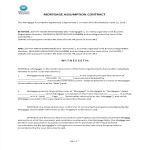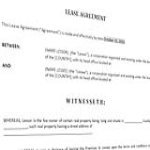Infant Feeding Chart

I-Save, punan ang mga blanko, i-printa, Tapos na!
How do I calculate how much to feed my newborn? How to create a Baby Feeding Chart? Download this Baby Feeding Chart template that will perfectly suit your need
Mga magagamit na premium na format ng file:
.docx- Itong dokumento ay sertipikado ng isang Propesyonal
- 100% pwedeng i-customize
Life Buhay pediatrics
How do I calculate how much to feed my newborn? How to create a Baby Feeding Chart? Download this Baby Feeding Chart template that will perfectly suit your needs.
This guide is intended primarily for use by those who care for and feed infants under 12 months of age and participate in the Child and Adult Care Food Program (CACFP). This information will also be useful to those in facilities that participate in the U.S. Department of Agriculture’s (USDA) other Child Nutrition Programs serving infants, i.e., National School Lunch Program (NSLP), School Breakfast Program (SBP), and Summer Food
Service Program (SFSP). The guide presents information on infant development, nutrition for infants, breastfeeding and formula feeding, safe food handling and food preparation, choking prevention, and some of the Infant Meal Pattern requirements to help caregivers meet the challenge of nurturing and feeding the infants under their care.
This Baby Feeding Chart guide is designed to provide nutrition guidance and is not inclusive of all current Food and Nutrition Service (FNS) policy memoranda, FNS Instructions, or program regulations relating to infants in Child Nutrition Programs. Providers and staff should contact their State agency for the most up-to-date policies and Infant Meal Pattern. The Infant Meal Pattern is used by caregivers and the term “caregiver” refers collectively to the different types of facilities—including schools, residential child care institutions, child care centers, family day care homes, and homeless shelters—that provide meal services to infants in the Child Nutrition Programs. The
word “parent” is used to refer to an infant’s parent or guardian.
Be aware that State agencies may establish policies that differ from the Federal requirements presented in this guide. Always check with your State agency if you have questions.
The figures found throughout the text are in black and white so that they can be easily reproduced and used as handouts. We encourage use of these handouts as part of training sessions. They can also be distributed to child care providers, parents, or others ho are responsible for feeding infants. Every effort has been made to ensure the accuracy of the information in this guide. The recommendations and guidelines in this publication are not designed to serve as an exclusive nutrition care plan or program for all infants. It is highly recommended that caregivers obtain written instructions related to feeding an infant from the parent and, if available, from the infant’s doctor, and that this information be kept on file. It is the caregiver’s responsibility to evaluate the appropriateness of the recommendations and guidelines in this guide given the information received from each infant’s parents and doctor. If caregivers have questions regarding the appropriateness of any recommendations or guidelines for a particular infant, they should consult with the parents, who can consult with the infant’s doctor.
Guidelines on Storing, Handling, and Feeding Breastmilk Breastmilk needs to be stored and handled safely to keep it from spoiling. Follow the specific health and safety regulations that are required by your State and local authorities for safe food handling. General tips for handling breastmilk follow.
Handling of Breastmilk Before Arriving at the Facility
Ask mothers to:
• Store their breastmilk in the refrigerator or freezer right after they express it and label the bottles with:
— the baby’s name, and
— the date and time the breastmilk was collected.
• Store the milk in hard plastic bottles if possible because these are unbreakable.
• Fill the bottles with the amount of breastmilk the baby usually drinks at one feeding. Some babies may consume less than 4 ounces at a feeding. The mother can freeze some bottles with 1 to 2 ounces of breastmilk for times when the baby wants some extra breastmilk.
• Carry bottles of fresh or frozen breastmilk to the facility in a cooler with an ice pack to keep the milk at a cold temperature.
Handling and Storing Breastmilk at the Facility
• Breastmilk from a mother is designed specially to meet the needs of her baby. If more than one baby or child is drinking from bottles, make sure that each bottle is clearly labeled with the respective baby’s or child’s name and never accept an unlabeled bottle from a parent. Do not use unlabeled bottles that have been accidentally accepted.
• Refrigerate bottles immediately when they arrive and until ready to use.
• Use bottles of breastmilk only for the baby for whom they are intended.
• To prevent spoiling, do not allow bottles of breastmilk to stand at room temperature.
• Use refrigerated bottles of fresh breastmilk, kept at 40° Fahrenheit or below, within 48 hours from the time they were collected. Throw out unused breastmilk if not used within 48 hours. Although some suggest that fresh breastmilk can be stored for longer than 48 hours, the 48-hour period assures safety.
• Breastmilk can be stored in a freezer (with a separate door from the refrigerator), for up to 3 months from when it was collected. Freezer temperature should be 0° Fahrenheit or
below. If the freezer is not working or if there is a power failure, frozen milk may thaw out and become spoiled before 3 months. See page 74 on checking the temperature of
your freezer.
• Rotate frozen breastmilk, using the oldest milk first.
• Protect breastmilk in an air-tight container (hard plastic bottles are recommended) while in the freezer. Once the breastmilk is removed from the freezer and thawed, refrigerate it at 40° Fahrenheit or below and use it within 24 hours; do not refreeze it.
• Do not save and reuse breastmilk leftover from bottles.
• Wash skin on which breastmilk has spilled with soap and water immediately.
Preparing and Using Stored Breastmilk for Feeding
• Wash your hands, as described.
• Thaw a bottle of frozen breastmilk in the refrigerator or hold it under running cold water. Thaw only as much frozen breastmilk as you think a baby will need for a feeding.
• Do not thaw frozen breastmilk at room temperature, by heating on a stove, or in a microwave. Liquid may become very hot when microwaved even though the bottle feels cool.
The hot liquid could seriously burn babies. Also, heating damages special substances in breastmilk that protect baby’s health.
• If breastmilk has a bad odor after thawing, it may have spoiled and should be thrown out.
• Once thawed, do not refreeze breastmilk.
• For those babies who prefer a warm bottle, hold the bottle under running warm (not hot) water immediately before feeding the baby. Warm only as much breastmilk as you
think a baby will need for a feeding. Feed breastmilk immediately after warming.
• Shake the bottle of breastmilk before feeding the baby because breastmilk separates into two layers when it is stored.
• After a feeding, throw out any unused breastmilk left in a bottle and wash the bottle with soap and hot water immediately.
• Follow the baby’s lead in the amount of breastmilk to feed. Feed the baby until he or she is no longer hungry.
Cleaning Bottles
• Clean and sanitize bottles and their parts before reusing or filling with new expressed breastmilk as shown in Figure, Chapter 4 on Preparing Formula.
Throw out disposable nursing bags, if used, after each use. See the chart on how to store, handle, and feed breastmilk.
Our collection of online health templates aims to make life easier for you. Our site is updated every day with new health and healthcare templates. By providing you this health Baby Feeding Chart template, we hope you can save precious time, cost and efforts and it will help you to reach the next level of success in your life, studies or work!
Age Mouth Patterns Hand and Body Skills Feeding Skills or Abilities Birth through 5 months • Suck/swallow reflex • Tongue thrust reflex • Rooting reflex • Gag reflex • Poor control of head, neck, trunk • Brings hands to mouth around 3 months • Swallows liquids but pushes most solid objects from the mouth 4 months through 6 months • Draws in upper or lower • Sits with support lip as spoon is removed from mouth • Good head control • Up-and-down munching movement • Uses whole hand to grasp objects (palmer • Can transfer food from grasp) front to back of tongue to swallow • Tongue thrust and rooting reflexes begin to disappear • Gag reflex diminishes • Opens mouth when sees spoon approaching 5 months through 9 months • Begins to control the position of food in the mouth • Up-and-down munching movement • Positions food between jaws for chewing • Begins to sit alone unsupported • Follows food with eyes • Begins to use thumb and index finger to pick up objects (pincer grasp) • Begins to eat mashed foods • Eats from a spoon easily • Drinks from a cup with some spilling • Begins to feed self with hands 8 months through 11 months • Moves food from side-toside in mouth • Begins to curve lips around rim of cup • Begins to chew in rotary pattern (diagonal movement of the jaw as food is moved to the side or center of the mouth) • Sits alone easily • Begins to eat ground or finely chopped food and small pieces of soft food • Begins to experiment with spoon but prefers to feed self with hands • Drinks from a cup with less spilling 10 months through 12 months • Rotary chewing (diagonal movement of the jaw as food is moved to the side or center of the mouth) • Begins to put spoon in mouth • Begins to hold cup • Good eye-hand-mouth coordination • Transfers objects from hand to mouth • Takes in a spoonful of pureed or strained food and swallows it without choking • Drinks small amounts from cup when held by another person, with spilling • Eats chopped food and small pieces of soft, co
This Baby Feeding Chart is intuitive, ready-to-use and structured in a smart way. Try it now and let this Baby Feeding Chart sample inspire you.
We certainly encourage you to download this Baby Feeding Chart now and use it to your advantage!
Also interested in other health and healthcare templates? AllBusinessTemplates is the most elaborate platform for downloading health templates and is updated every day with new health and healthcare related templates! Just search via our search bar or browse through our thousands of free and premium health forms and templates, contract, documents, letters, which are used by professionals in the healthcare industry. For example health care directive, mental health treatment plan, health management report, allergy log, healthy weekly meal plans, sick leave letter, health evaluation form, and much more...
DISCLAIMER
Wala sa 'site' na ito ang dapat ituring na legal na payo at walang abogado-kliyenteng relasyon na itinatag.
Mag-iwan ng tugon. Kung mayroon kang anumang mga katanungan o mga komento, maaari mong ilagay ang mga ito sa ibaba.



